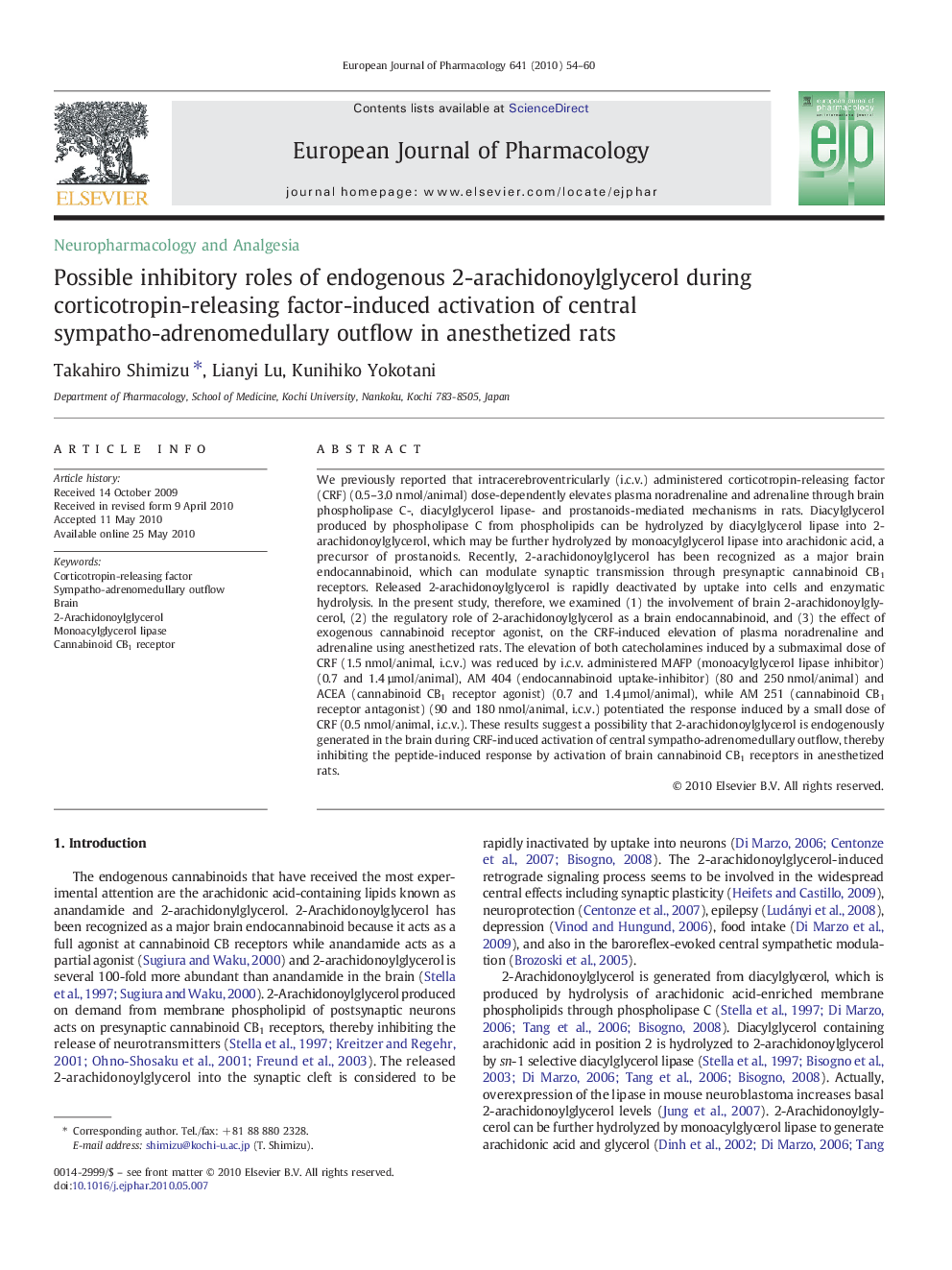| کد مقاله | کد نشریه | سال انتشار | مقاله انگلیسی | نسخه تمام متن |
|---|---|---|---|---|
| 2533459 | 1559052 | 2010 | 7 صفحه PDF | دانلود رایگان |

We previously reported that intracerebroventricularly (i.c.v.) administered corticotropin-releasing factor (CRF) (0.5–3.0 nmol/animal) dose-dependently elevates plasma noradrenaline and adrenaline through brain phospholipase C-, diacylglycerol lipase- and prostanoids-mediated mechanisms in rats. Diacylglycerol produced by phospholipase C from phospholipids can be hydrolyzed by diacylglycerol lipase into 2-arachidonoylglycerol, which may be further hydrolyzed by monoacylglycerol lipase into arachidonic acid, a precursor of prostanoids. Recently, 2-arachidonoylglycerol has been recognized as a major brain endocannabinoid, which can modulate synaptic transmission through presynaptic cannabinoid CB1 receptors. Released 2-arachidonoylglycerol is rapidly deactivated by uptake into cells and enzymatic hydrolysis. In the present study, therefore, we examined (1) the involvement of brain 2-arachidonoylglycerol, (2) the regulatory role of 2-arachidonoylglycerol as a brain endocannabinoid, and (3) the effect of exogenous cannabinoid receptor agonist, on the CRF-induced elevation of plasma noradrenaline and adrenaline using anesthetized rats. The elevation of both catecholamines induced by a submaximal dose of CRF (1.5 nmol/animal, i.c.v.) was reduced by i.c.v. administered MAFP (monoacylglycerol lipase inhibitor) (0.7 and 1.4 µmol/animal), AM 404 (endocannabinoid uptake-inhibitor) (80 and 250 nmol/animal) and ACEA (cannabinoid CB1 receptor agonist) (0.7 and 1.4 µmol/animal), while AM 251 (cannabinoid CB1 receptor antagonist) (90 and 180 nmol/animal, i.c.v.) potentiated the response induced by a small dose of CRF (0.5 nmol/animal, i.c.v.). These results suggest a possibility that 2-arachidonoylglycerol is endogenously generated in the brain during CRF-induced activation of central sympatho-adrenomedullary outflow, thereby inhibiting the peptide-induced response by activation of brain cannabinoid CB1 receptors in anesthetized rats.
Journal: European Journal of Pharmacology - Volume 641, Issue 1, 1 September 2010, Pages 54–60